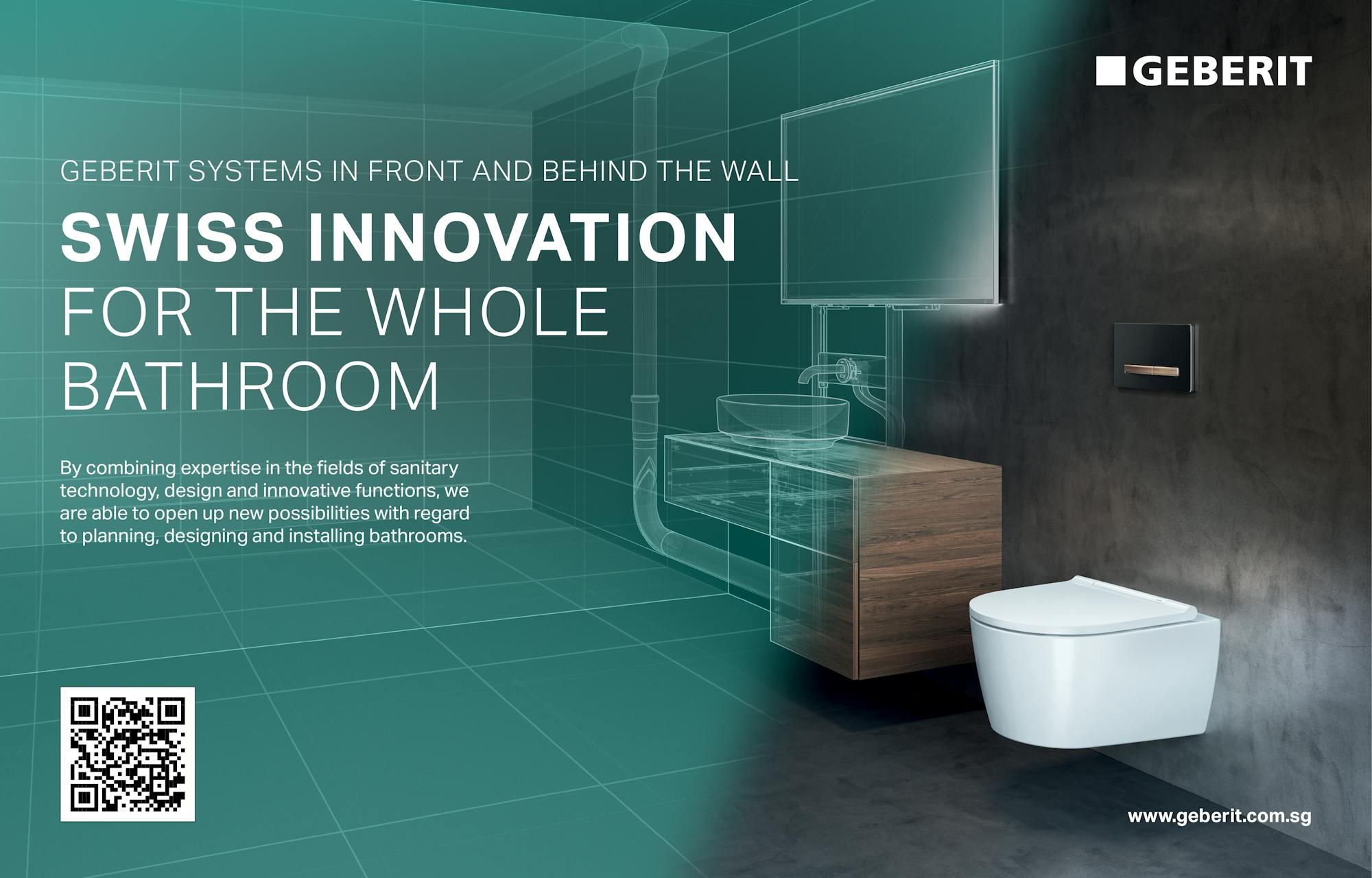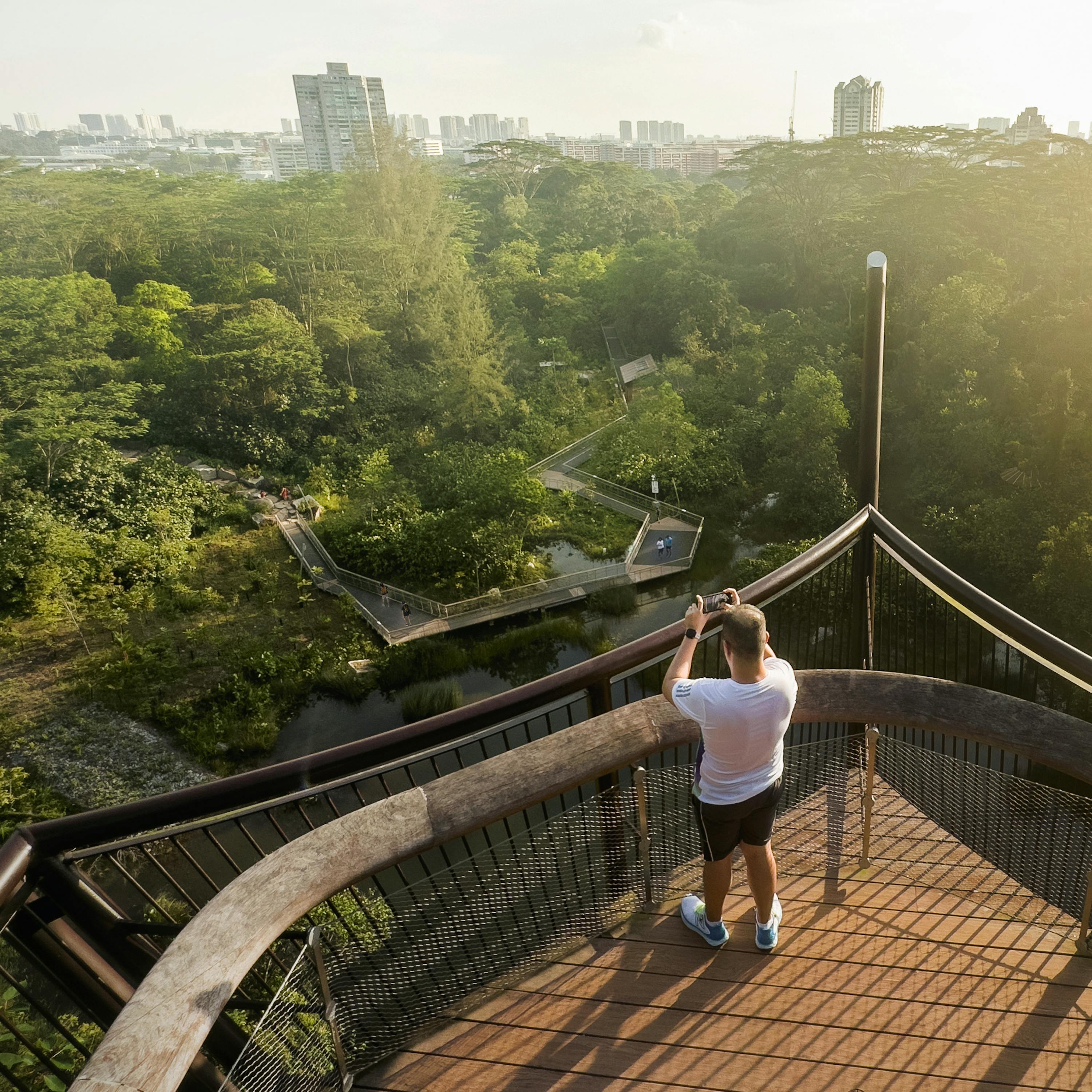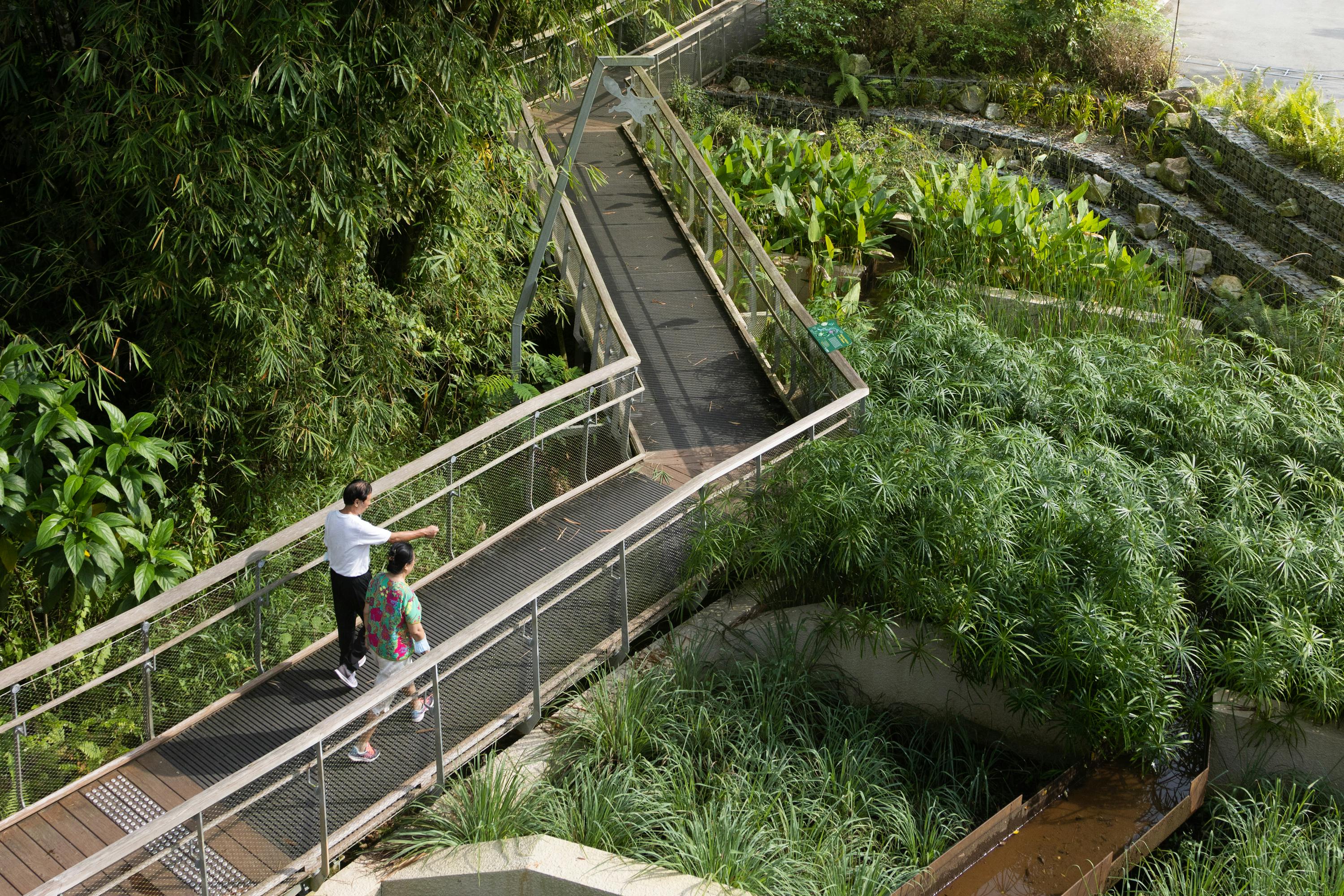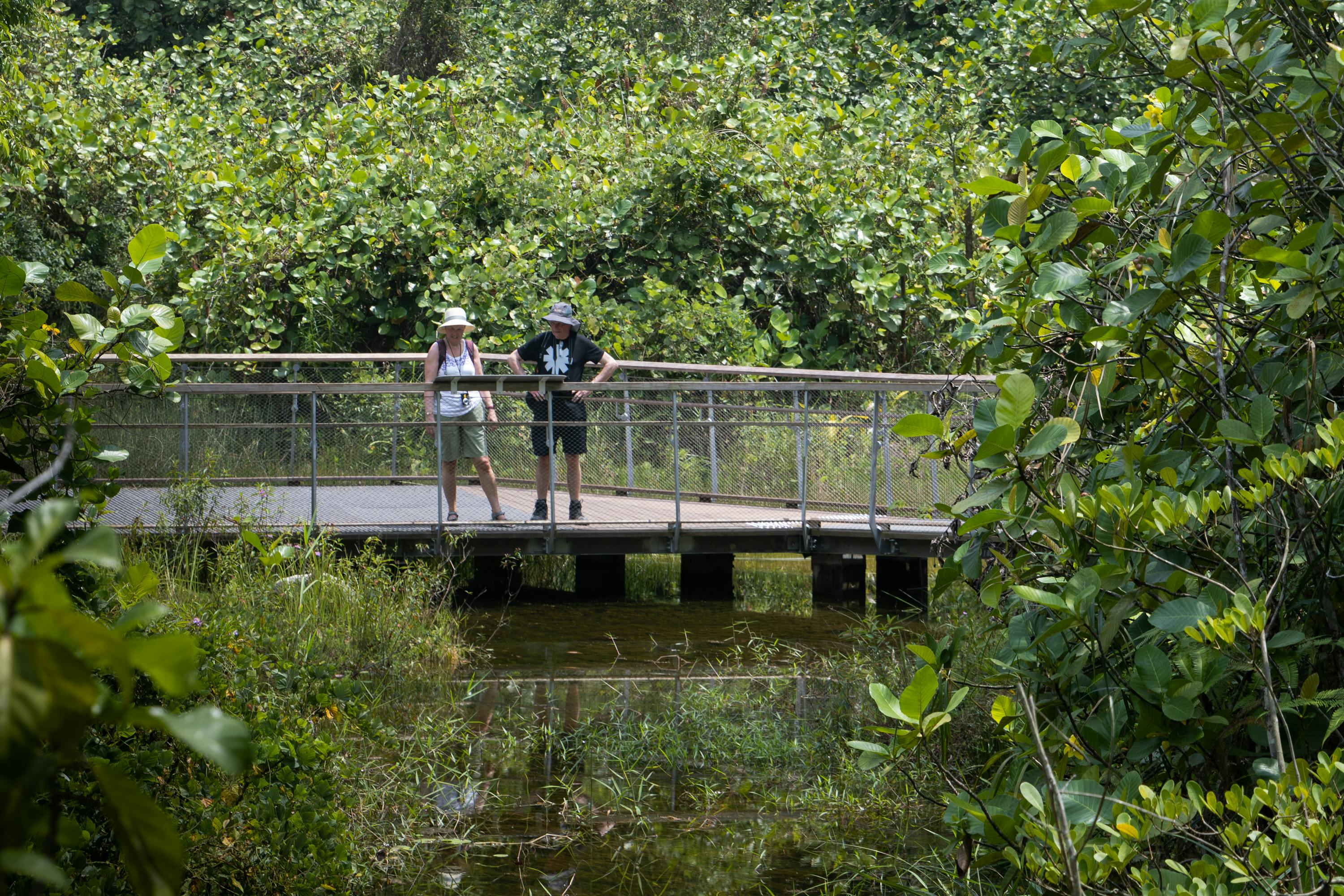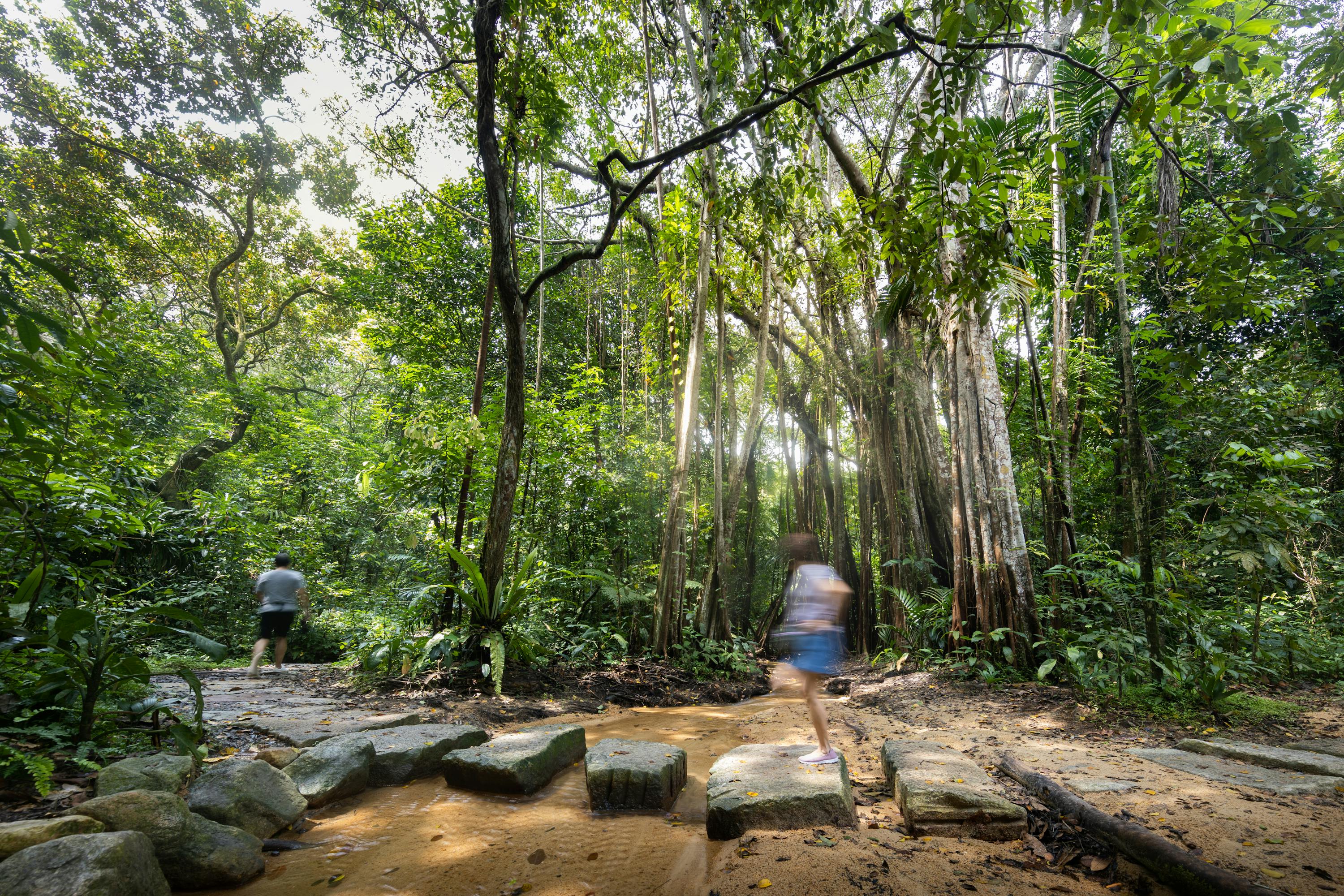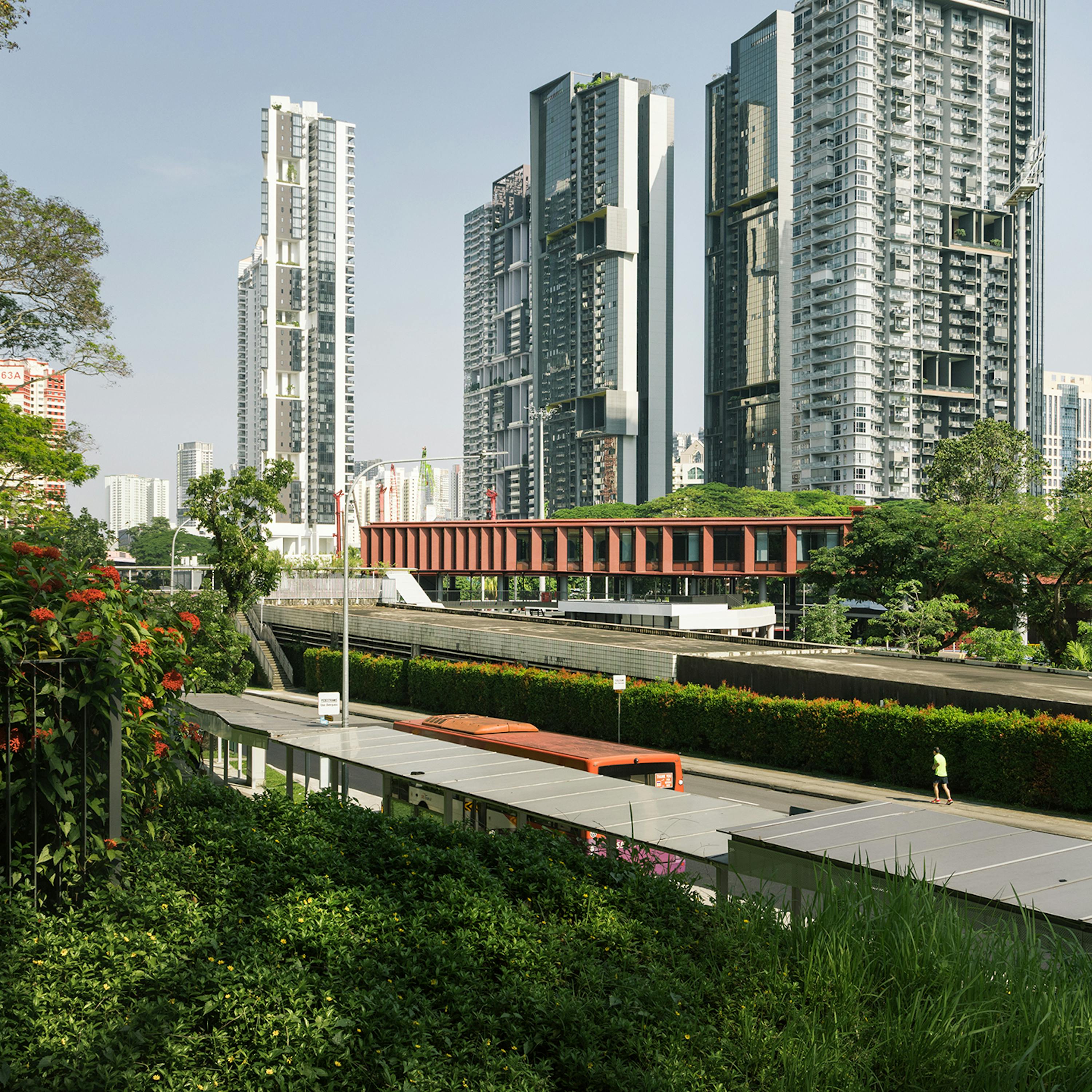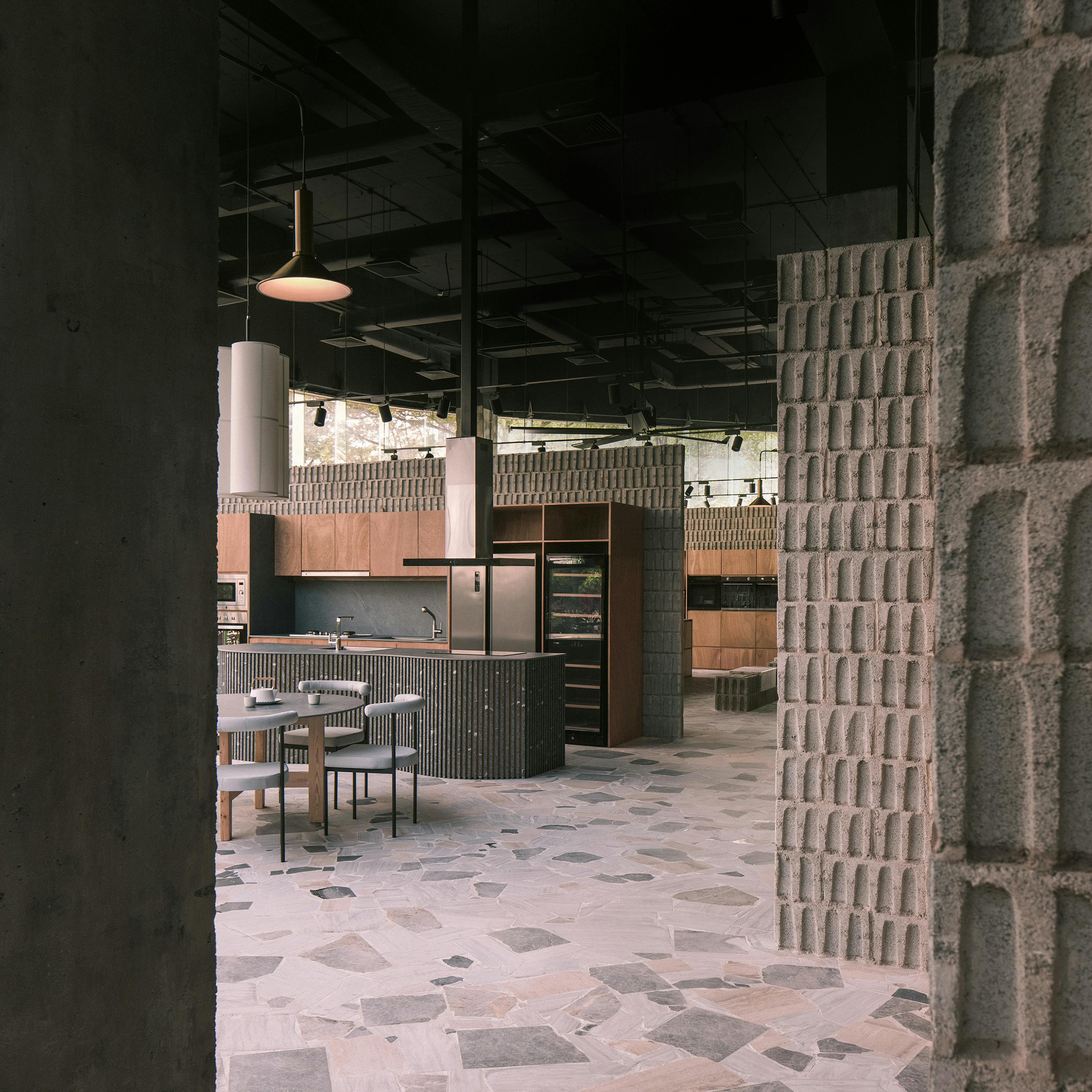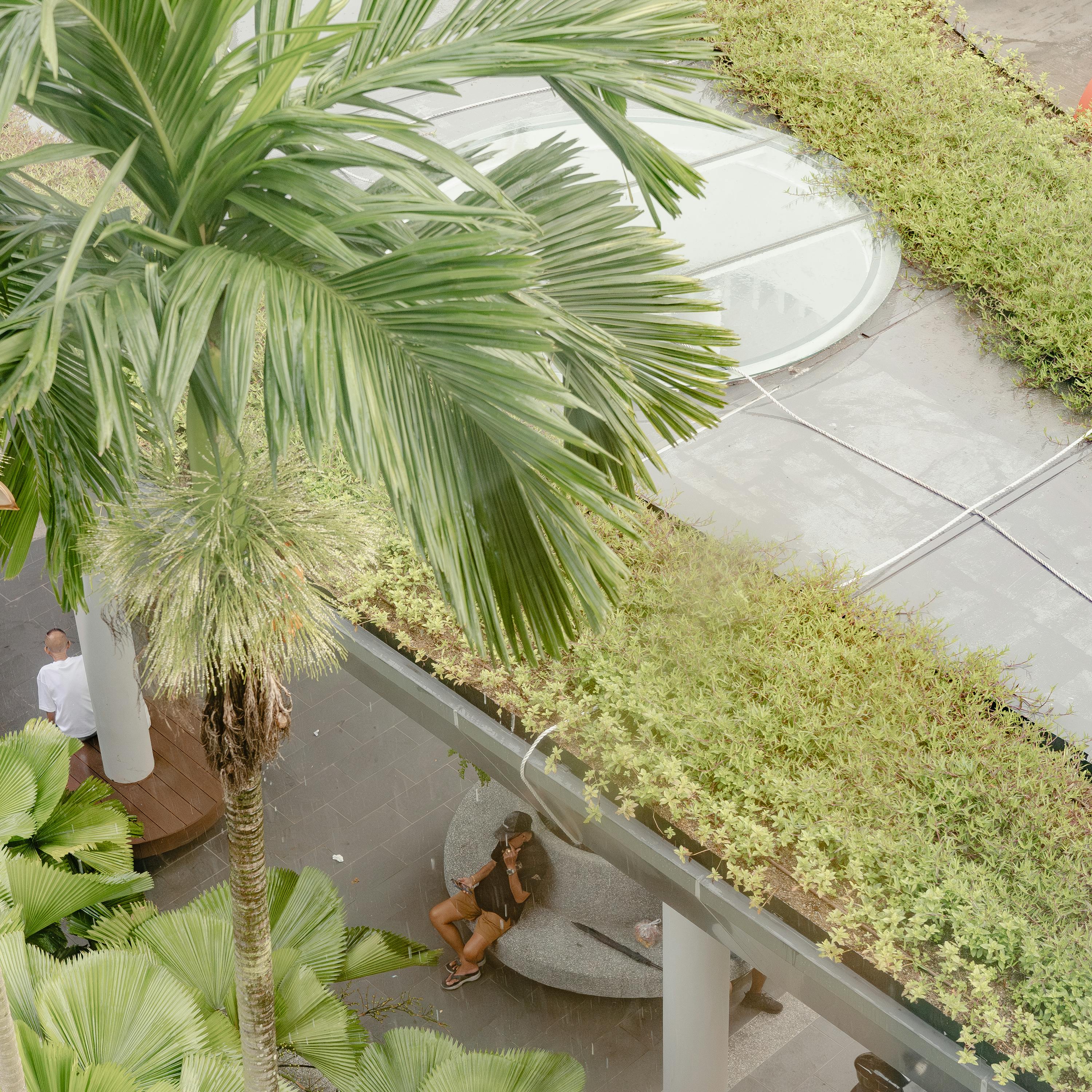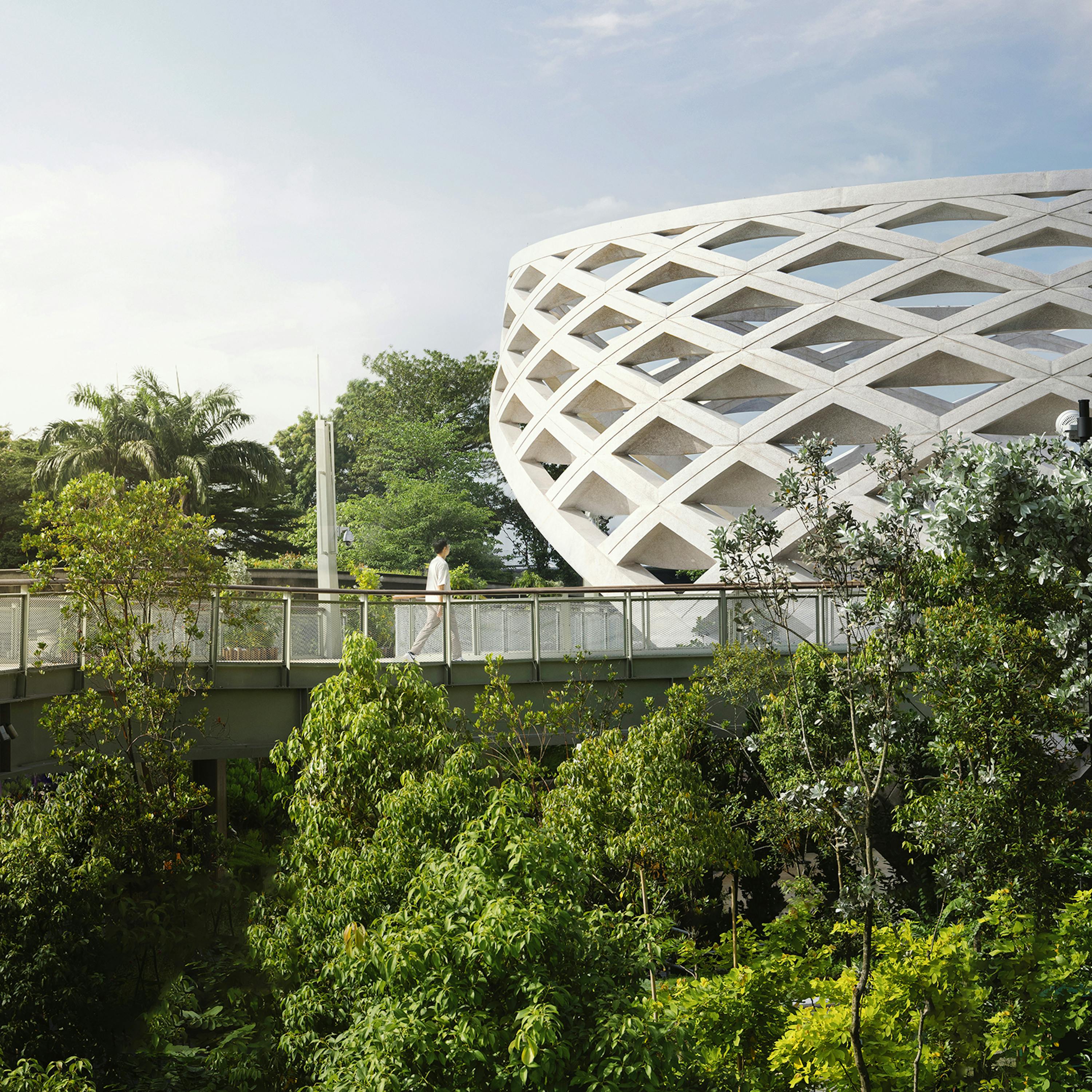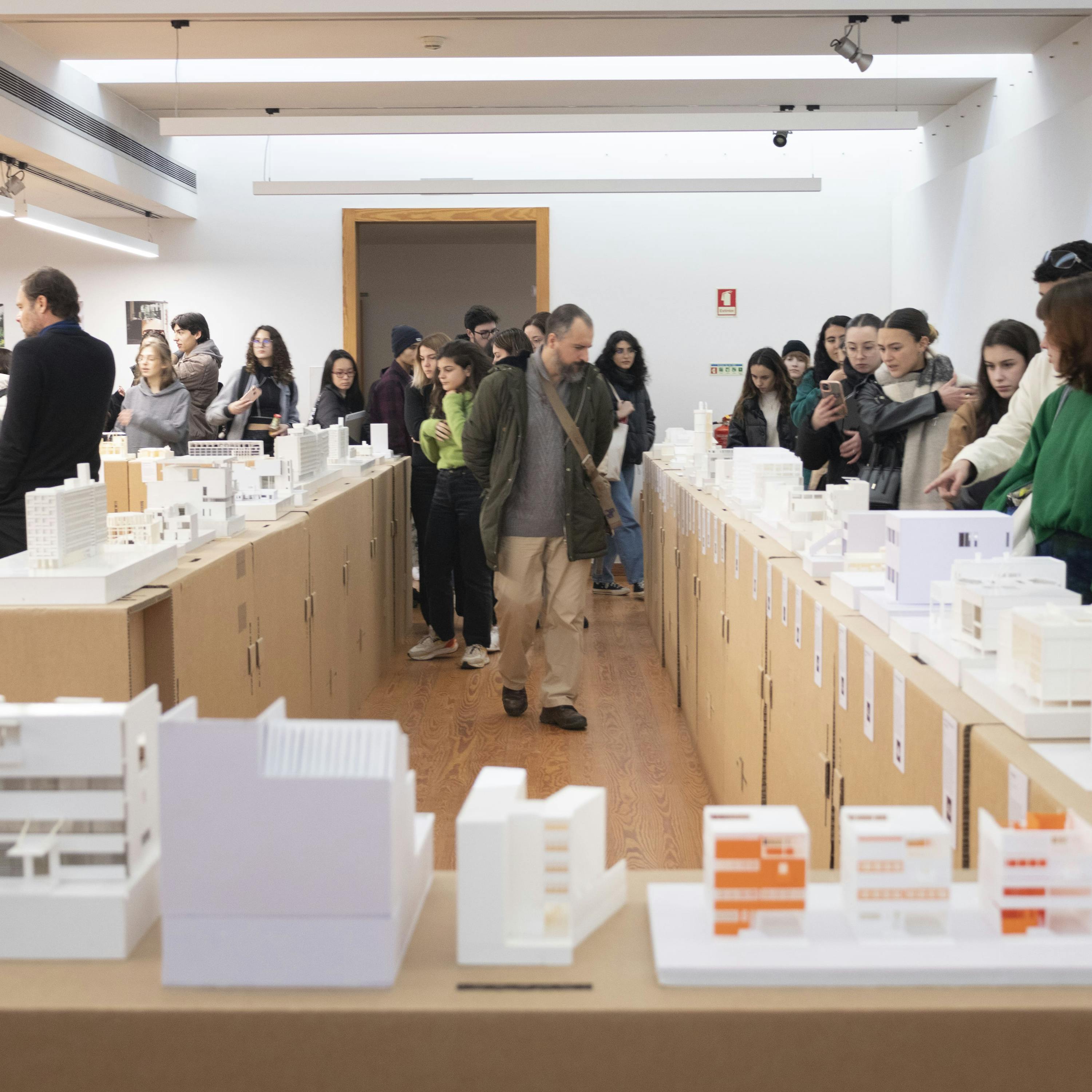Pathways For All: Rifle Range Nature Park by Henning Larsen
TSA’s Ar. Kenneth Koh brings us through the sensitive natural and urban ecologies of Henning Larsen’s Rifle Range Nature Park, examining how its various paths for movement, water, and fauna overlap and intersect.
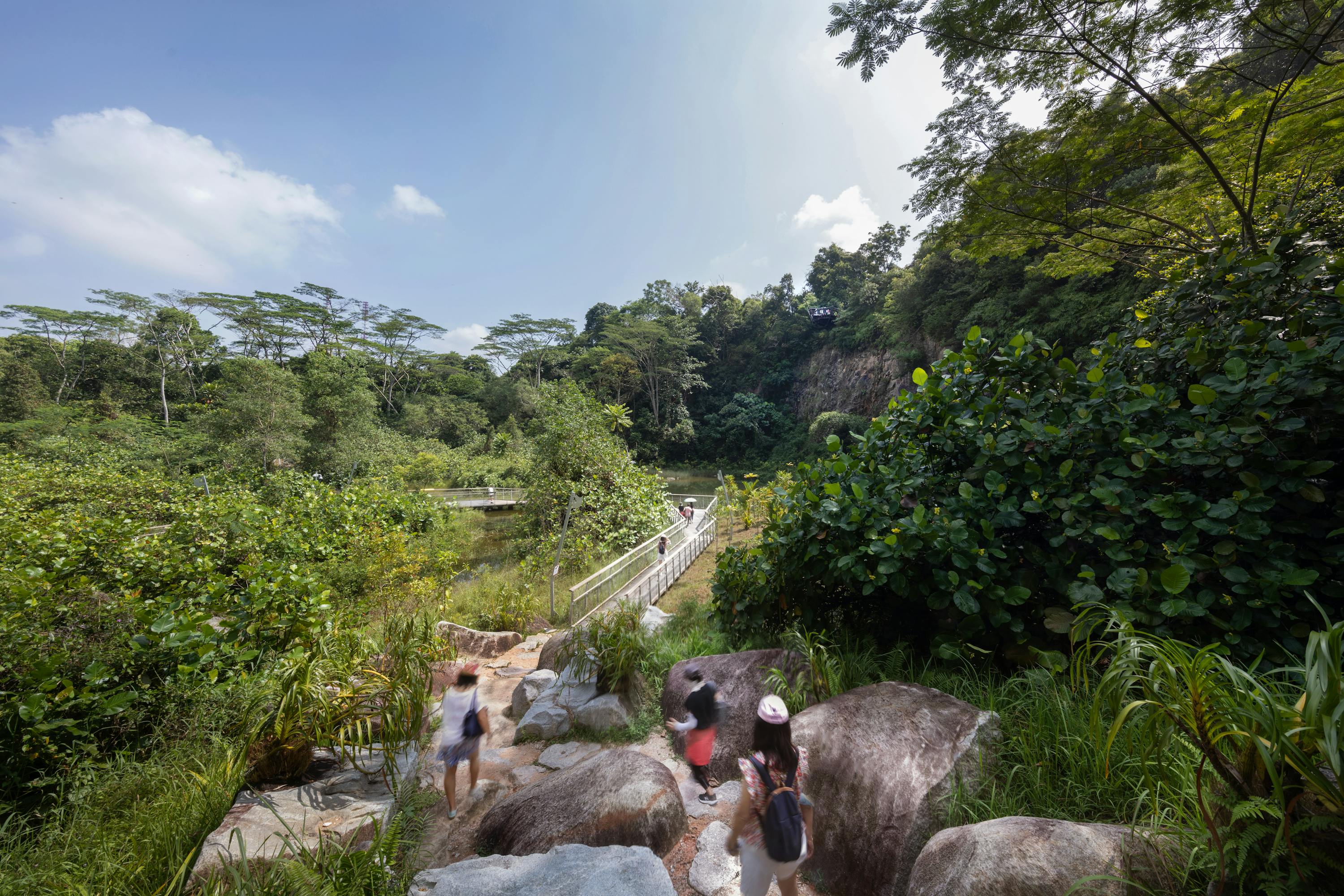
On the southern fringes of Bukit Timah Nature Reserve, the Rifle Range Nature Park planned by Henning Larsen has anchored its roots and walkways since its opening at the end of 2022. Crafted as a buffer park, it was primarily introduced to alleviate human traffic from the established reserve up north, while cultivating a new environment where people and animals alike can find their own pathways.
Paths for Movement
Sensitively set back from the busy road, the park is designed as a network of multiple trails of varying difficulty and points of interest for different profiles of parkgoers. Challenging hiking trails up rocky boulders taken from the old quarry, gentle boardwalks meandering through the quietly maturing forest, a playful obstacle course that invites children to clamber over hewn rocks and logs.
The park is also designed for the passage of forest critters, with intersecting bridges of poles, rope and pipe introduced both overhead and underground, connecting the park ecologically to Bukit Timah while creating new and complementary habitats for these animals. In its unique way, the park welcomes all.
Going back a couple of years, the site of the Rifle Range Nature Park starkly contrasted with its open inclusivity today. Once a quarry overgrown by a secondary forest with a single dominant species of trees, this site was seemingly lush and green. It was, however, problematic as it was not conducive for biodiversity due to its monoculture.
This resulted in Henning Larsen’s proposal to transform the very nature of the forest through succession planting – the planting of pioneering plant species that grow rapidly and create shade for new species, and eventually sacrifice themselves for the new generation of richly diverse flora.
Paths for Water
Another objective of the design team was to restore the riparian habitat existing on this very site. Early surveys of the forest and quarry area by the design team revealed a stream that was not on official survey maps. This led the team to propose redirecting existing streams and newly carved swales towards the heart of the former Sin Seng quarry, transmuting the dense forest into a vastly different setting - a freshwater wetland environment with three distinct types of habitats, hosting a vast variety of new species.
The new ecosystem’s delicate balance had to be carefully calibrated, especially with human interaction coming into play when the park was opened. For example, it was observed that parkgoers would release fish into the wetland environment as a cultural event on Vesak Day, disrupting the ecosystem. As a result, underwater fences had to be installed to separate the new fish from the wetland ecosystem.
Paths for the Small
The park was also designed for its small forest inhabitants, including surprising creatures like the Sunda Pangolin and Leopard Cat which are critically endangered species. Special care was taken in studying the movement of animals to establish the design and spacing of fauna crossings. For instance, the glide slope ratio of a colugo, a gliding mammal native to Singapore’s forests, would determine the spacing of poles and new trees reachable to these unique creatures.
The form of the colugo was also referenced in the park’s design, where its unique bat-like shape in mid-flight was mimicked in the signage design for the Colugo Trail, as well as the cantilevered Colugo Deck at the peak of the quarry that offers a panoramic view of the vast surroundings.
Biomimicry is also used in the design of the Waterhen Hide, where nest-like structures allow visitors to get closer to the wetlands to observe kingfishers and bitterns. There is a genuine sense of childlike discovery as one notices these design features and draws parallels with nature’s own designs.
The sensitivity towards nature not only encompasses the nurturing flora and fauna, but also an overarching concept of sustainability – a goal that motivates many of the design team’s projects. It is also Singapore’s first net positive energy nature park, with arrays of solar panels producing more energy than required for the site’s operation.
Other sustainable features that one would encounter include shelters made from mass engineered timber and beautifully curated rain garden that channels stormwater from hardscapes.
“The design never really ends,” as Chum Jia Xin, associate director and team leader from Henning Larsen, would say. Many critical decisions had to be made even up to the final construction phase of the park. Chum shared that this was a dynamic process that started with extensive surveys conducted on site, which involved manual measurement and drone photography.
Natural elements had to be worked around and worked with. To carve out the more challenging trails, the design team had to carefully take stock of the boulders found on site, then sketch and test out various arrangement possibilities. This was a meticulous, hands-on process that required close collaboration with the contractor. Information from the contractor subsequently informed tweaks in the design. Surveys on site about the exact position of structural banyan tree roots would result in the shifting of the decks forming the Banyan Trail.
Input from the client and consultants also resulted in an evolution of some major parts of the design. An initial idea proposed during the design concept phase was to have a walkway hugging the quarry’s cliff face, but this had to change due to a geologically and structurally unstable cliff surface. This transformed into equally engaging pathways and lookout point crowning the Colugo Trail that we see today.
It is this responsive approach to design that underpins the design team’s strategy in shaping the landscape, and the paths taken during the planning process have resulted in its beautiful physical pathways, crafted with utmost sensitivity.






